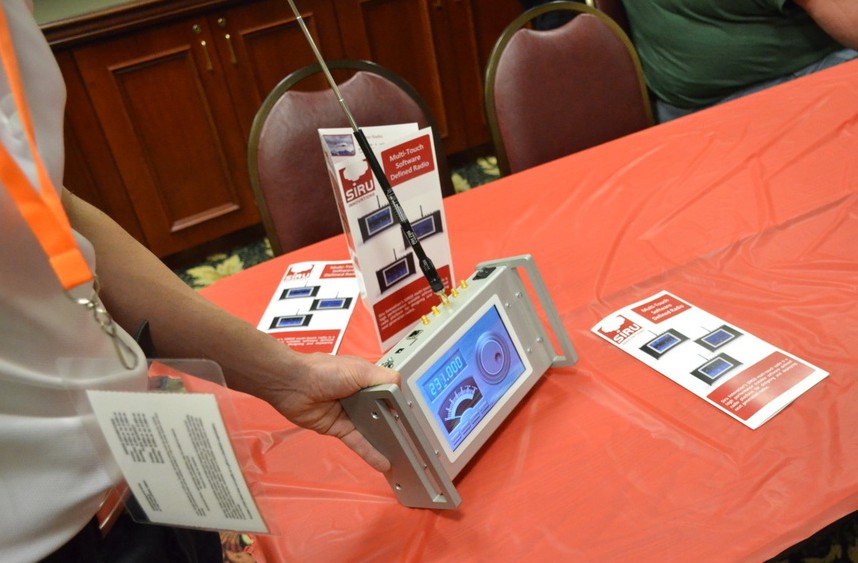
A few weeks ago, at the Four Days In May conference (held alongside the Dayton Hamvention) I met Jarkko Mäkivaara from the Finnish company Siru.
Jarkko was demonstrating the SDR20: a radio that immediately grabbed my attention from across the room. The SDR20 is a fully portable, robust, multi-touch portable SDR transceiver.

The screen on the SDR20 is as responsive as an iPad and fully developed around SDR functionality. While Jarkko didn’t have an HF signal of any sort inside the hotel convention room, I was able to play with the interface a bit, which I found rather intuitive.

(Source: Siru)
The SDR20’s product brochure lists some of its features:
- 2-channel transceiver operation
- Two methodologies for implementation: IQ Mod / Demod and Direct Down and Direct Up (DDC, DUC) conversion
- Up to 200MHz bandwidth per channel
- 100mW transmit power. Higly efficient 1kW exciter available separately.
- Frequency range covers DC to 2.5 GHz
- State of the art Altera Cyclone SOC-FPGA (Including dual-ARM9 Cortex)
- Graphics Prosessor accelerated Multi-Touch screen with a slick user interface
- GNURadio, C++ API/Python, VHDL/Verilog/High Level Synthesis sandbox
- High-speed ethernet interface for computer connection
- Internal clock 20 PPS
- Coherent operation with external clock source (GPS, Rubidium etc.)
- Rugged and stylish enclosure / Rack mount
Of course, the SDR20 is truly designed for industrial and government/military applications, thus it carries a price tag reflective of those markets: €3,395.00 (about $3,800 USD).

Still, seeing the SDR20 gives me hope that multi-touch, portable SDRs will become more commonplace as capacitive screens, processors, DSP chips and solid state storage continue to decline in price. Indeed, I wouldn’t be surprised if Siru is able to lower the price on future iterations of their portable SDR line.
If you would like to take a look at some of the SDR20’s specifications, check out this PDF product sheet and the video embedded below. Of course, you’ll find even more information and updates on Siru’s website. The SDR20 has shipped to Beta testers and should begin full production in the fall.
https://vimeo.com/122629896










